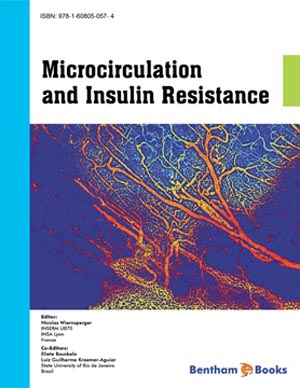Abstract
This chapter describes the arguments supporting our concept that microcirculatory defects may underlie insulin resistance (IR). Vascular (patho) physiology and metabolism are vast areas subjected to many confounding factors detailed here, which are cardinal to sort the many existing contradictory reports. A thorough analysis of the epidemiological and clinical literature clearly establishes that microvascular dysfunction and IR are linked and observable very early in life, well before metabolic syndrome and cardiometabolic diseases develop. In part 2 the thermodynamic, particularly microvascular effects of insulin itself are detailed and analyzed in terms of their physiological pertinence. Part 3 deals with underlying mechanisms, based on selected clinical situations. These reveal puzzling commonalities: together with cell physiology, they suggest that primary (inherited, early acquired) or secondary defects in sensing exaggerated physical forces of blood flow by the microvascular endothelial surface may be responsible. Glycocalyx and mainly caveolae, which are linked to vasomotor reactions and to insulin signalling and transport, are tentatively designed as the culprit.
Keywords: Endothelial dysfunction, insulin resistance, metabolic syndrome, microcirculation.






















